Phragmidium spp.
Some years, I step outside and notice some sort of problem developing on my roses, and I ask myself why I bother.
There are much easier plants to grow, right? Then I cut some of my favorite flowers and bring them inside, and I remember why it’s all worth it.
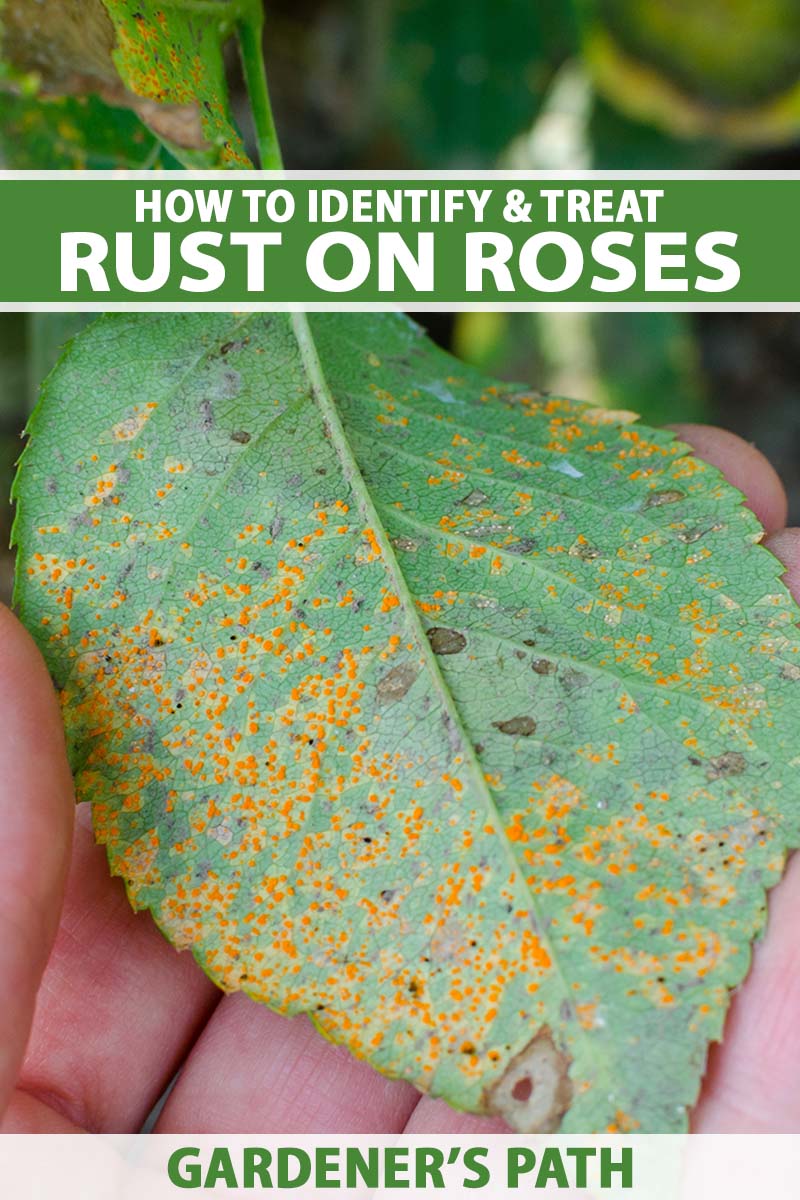
We link to vendors to help you find relevant products. If you buy from one of our links, we may earn a commission.
Rose rust is one of those diseases that makes me question my dedication to roses. I live in an area where it’s a matter of when, not if, I’ll be dealing with fungal issues.
When those tell-tale orange spores pop up, I know I let my care routine slip, and it’s time to step it back up.
Rust can be prevented, to some degree, but it’s pretty hard to eradicate. Better yet, there are many resistant options out there.
It used to be that rust mostly stuck to warm, humid areas like the Southern US and the Pacific Coast states. But as the climate changes and previously frigid areas experience warmer winters, it’s taking hold in more areas.
In some coastal areas, it’s a chronic issue that growers will deal with year after year. In this guide, we’re going to do our best to help you keep this fungal issue out of your garden.
If it does come calling, we’ll also help you deal with it. Here’s what we’re going to go over to make that happen:
What You’ll Learn
If you’re already dealing with rust, my condolences. You’re probably eager to figure out what you need to do, so let’s not wait one minute more:
What Is Rose Rust?
Rose rust is caused by several species of fungi in the Phragmidium genus.
The fungi in this genus only infect roses, so you don’t have to worry about the other plants in your garden coming down with this disease.
If you wanted to totally eradicate this disease, all you’d have to do is tear out all your roses and wait for a few years. The fungus would die because it doesn’t have a host.
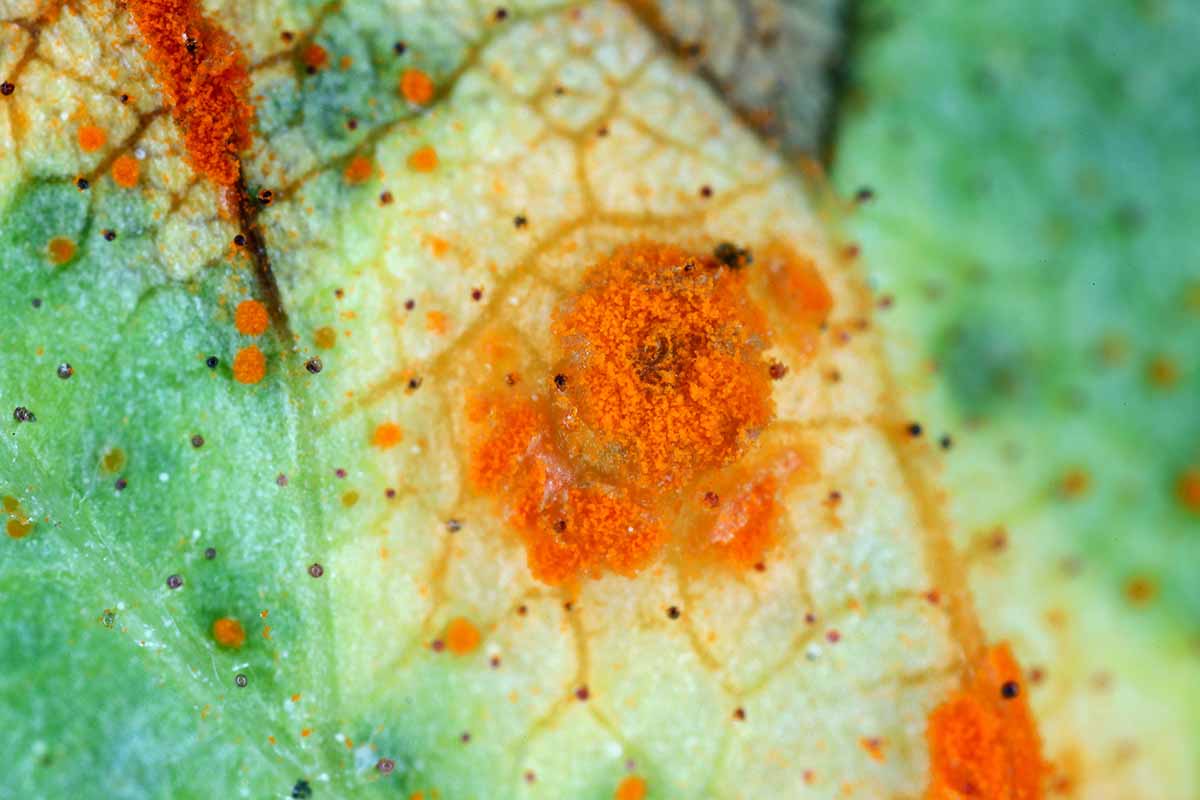
Rose rust spreads through the air and on water, so it’s pretty hard to prevent it from moving about a garden, since we can’t control the wind and rain.
Temperatures need to be around 65 to 70°F for the spores to actually infect the plant.
More importantly for our purposes, there needs to be moisture present on the leaves for at least two hours for infection to take place.
Symptoms
This disease looks like the typical rust you’ll see on many other species. It manifests as round, blackish-brown spots with orange, tan, or yellow centers.
The leaf itself might turn yellow, as well. If you turn the leaf over, you’ll see orange fungal spores. They look kind of like orange powder clustered together.
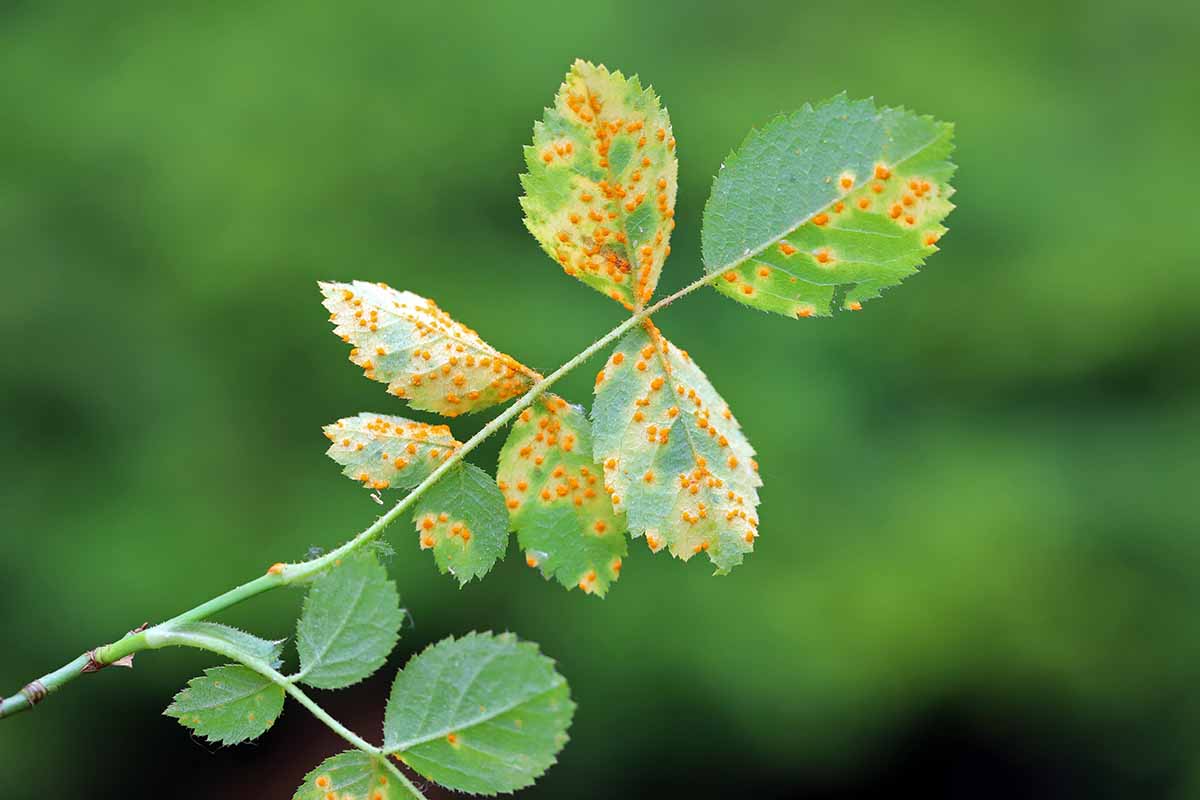
Usually, foliage on the bottom of the plant succumbs first, and then the disease moves its way up the plant. In the fall, the leaves will develop black spores.
You might also see galls and lesions on the canes.
It rarely kills a plant, but the disease can cause complete defoliation. When a plant is defoliated, it can’t produce and store up energy, which means poor growth and definitely no flowers.
Prevention
Since the spores spread in the air and in water, your job is to try to reduce the chances that the spores will be able to travel around from plant to plant.
As I said, in some areas, just expect to be dealing with rust to some degree every year. But that doesn’t mean it needs to spread like wildfire or seriously damage your plants.
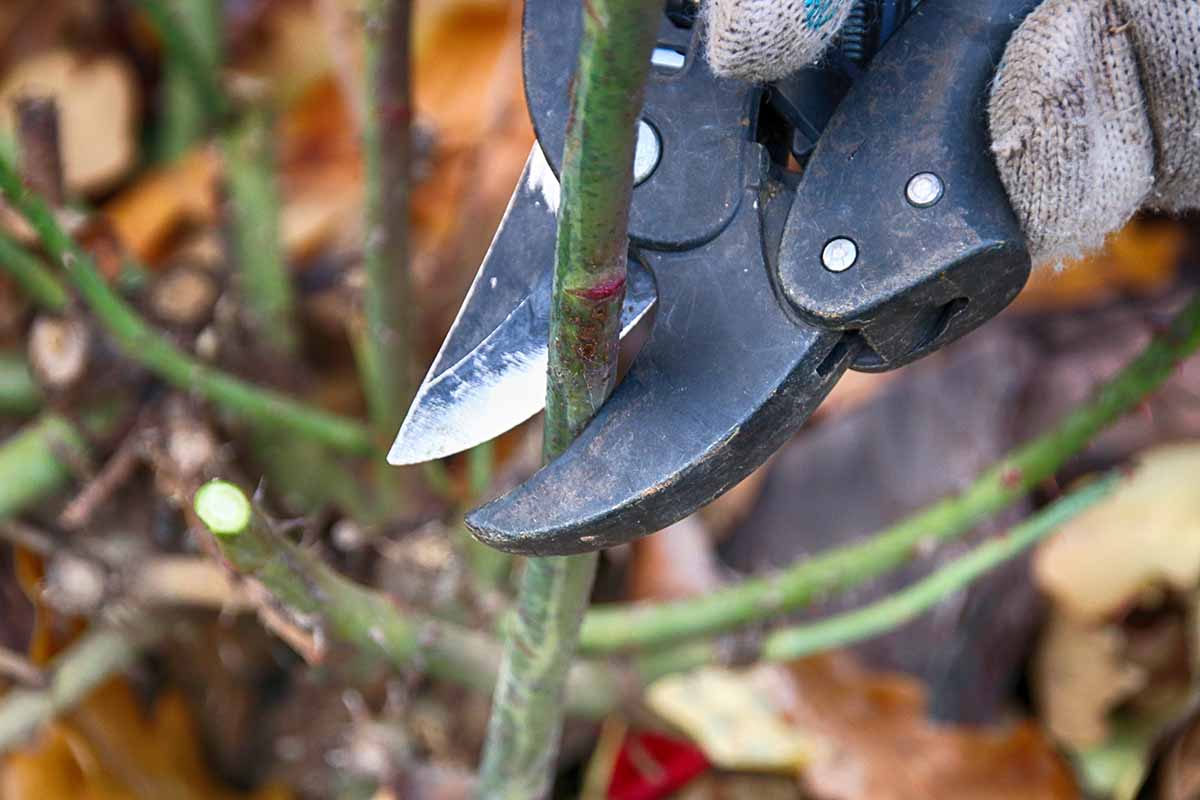
Prevention can go a long way.
Remember, this plant likes moderate temperatures and lots of moisture. So when spring and fall come around, it’s time to start being vigilant. Keep your plants well pruned so that they’ll dry out more quickly after a rain.

When it comes to watering, only water at the soil level, not on the leaves. You should also water in the morning, so the plant has plenty of time to dry out.
When the right conditions are present for spreading the disease, break out the preventative fungicides.
Products containing sulfur, copper, mancozeb, or Bacillus subtilis all work as preventatives. You can also use hydrophobic neem oil.
There are even products out there labeled specifically for treating rose rust. That’s how prevalent this disease has become.
Bonide’s Rose RX 3 in 1 contains neem oil and is available in 32 ounce ready to use and 16-ounce concentrates at Arbico Organics.
Spray every few weeks during wet weather, high humidity, and temperatures in the high 60s.
Finally, when working in the garden, be sure to clean your tools thoroughly between plants. You don’t want to prune one specimen that’s infected with rust and then take those pruners to an uninfected plant.
Treatment
You did your best, but rust got your roses anyway. Don’t feel bad, it happens to all of us.
The first thing you should do is prune off any symptomatic leaves. Then, pull out the fungicides.
Before you start spraying, know that you probably won’t ever get rid of the disease from the plant. Treatment will just reduce the symptoms and spread.

Use the same products as described above.
Unless you have a beloved plant that you don’t mind pampering year after year, seriously infected plants should be pulled and disposed of.
Resistant Cultivars
Since rust is part of our lives, now, planting resistant types can make your life much easier. Hybrids are more prone to rust, so avoid those.
Rugosas are nearly immune, so they’re perfect if you’re frequently struggling with this problem.
Boscobel
It took several double takes to convince myself that I wasn’t looking at a peony when I first saw ‘Boscobel.’
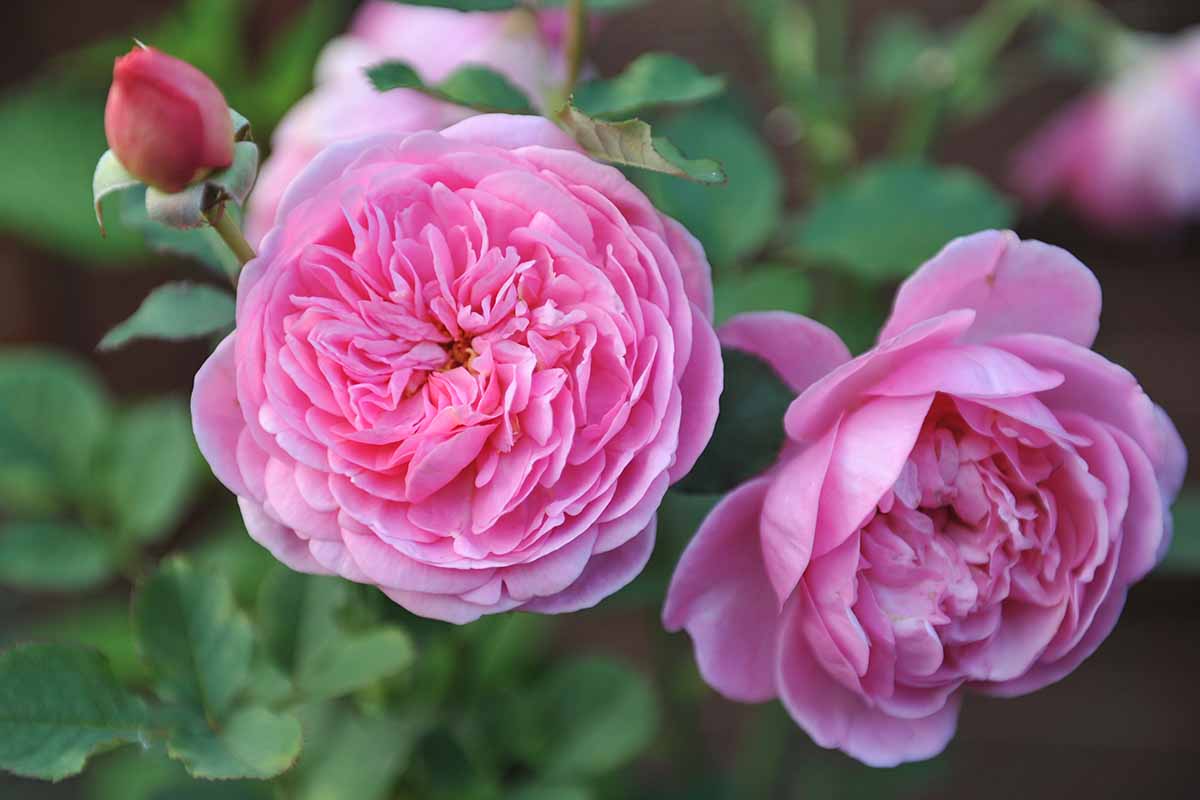
This David Austin has cupped flowers so packed with petals that it’s not clear how they all fit. Initially, the buds on this plant are red before opening and transitioning to coral pink.
Carefree Delight
If a rose was ever appropriately named, it’s ‘Carefree Delight.’

The continually blooming, single pink flowers on this shrub type will perform all season long with little input from you.
Cecil Brunner
This polyantha is part of the World Federation of Rose Societies’ Old Rose Hall of Fame.
It was bred in the late 1800s and continues to enjoy widespread popularity.
The heavily fragrant, pale pink flowers stick around for weeks and weeks, and the flushes will repeat throughout the summer and fall.
Bring one home from Nature Hills Nursery.
Graham Thomas
‘Graham Thomas’ is a David Austin rose named for the acclaimed British breeder.
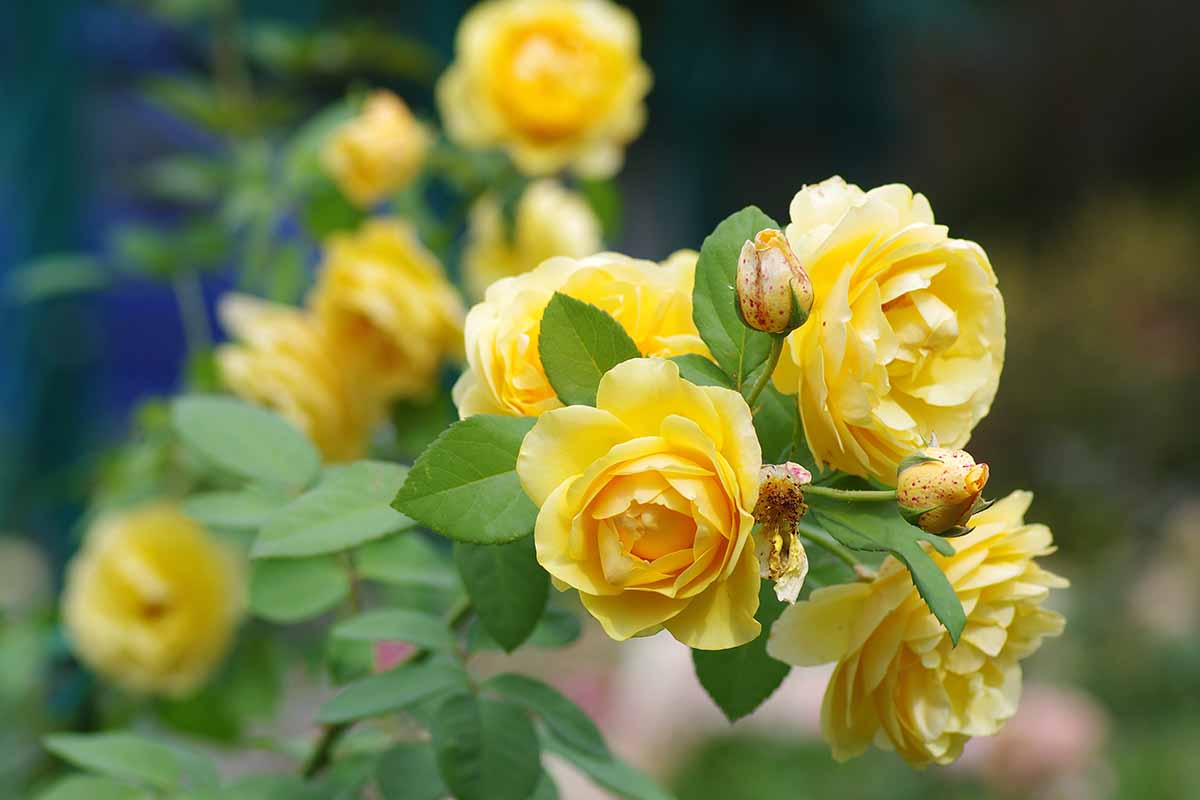
It’s a climber that’s positively smothered in fully double, yellow blossoms that are faintly scented like violets.
Bring home this legendary type from Burpee as a bare root.
Livin’ Easy
Life is easy when you’re growing this repeat blooming floribunda with salmon-orange blossoms.
It’s pretty much immune to black spot and rust, so you can enjoy your summer basking in the sun rather than fussing over your plants.
Snag one in a #2 container from Nature Hills Nursery or grab it paired and trained as a tree with another disease-resistant rose, ‘Easy Going,’ at Fast Growing Trees.
New Year
Celebrate summer with the grandiflora ‘New Year.’
The golden-yellow double flowers bring instant cheer wherever they grow, and the fact that you don’t have to waste time spraying and pruning will make you feel more like celebrating.
Sexy Rexy
Mention ‘Sexy Rexy’ to a rosarian, and they’ll probably comment on how it’s one of the most floriferous roses they’ve ever seen. It’s a vigorous floribunda with classic pink blossoms.
Add some color to your garden by purchasing one in a #2 container at Nature Hills Nursery.
Mr. Lincoln
‘Mr. Lincoln’ is so disease-resistant that, for a long time, it was the rootstock of choice for grafted roses.
The blood-red, double flowers on this hybrid tea are incomparable. That’s right, I know I said you should avoid hybrid teas, but this is the exception.
Nature Hills Nursery carries this tried-and-true toughy in #2 containers.
Peace
Some roses need no introduction. Rosarians will know exactly what you’re talking about when you mention ‘Peace.’
The orange and pink blossoms put noted breeder Meilland on the map, and it’s the standard that other roses are held to.
Bring some serenity to your yard by picking up a shrub from Fast Growing Trees.
Stop Rust From Ruining the Party
None of us want to deal with rust, but we don’t always get a say in the matter. Still, a little bit of knowledge goes a long way.
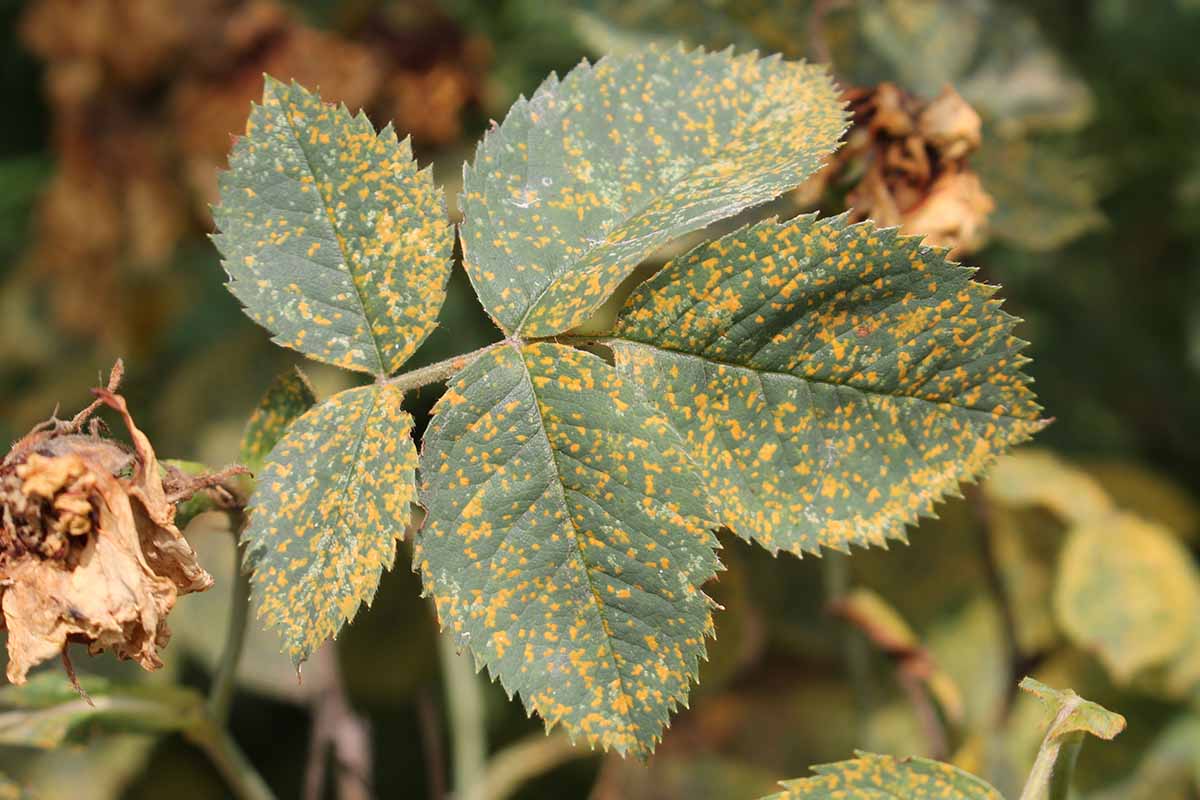
Are you struggling with rust this year? What kind of roses are you growing? Share your woes with us in the comments.
Are you still facing problems with your plants? Unfortunately, when a plant is suffering from one problem, it’s not unusual for other pests and diseases to join in.
We have a few guides to help you deal with issues on roses, if that’s the case:
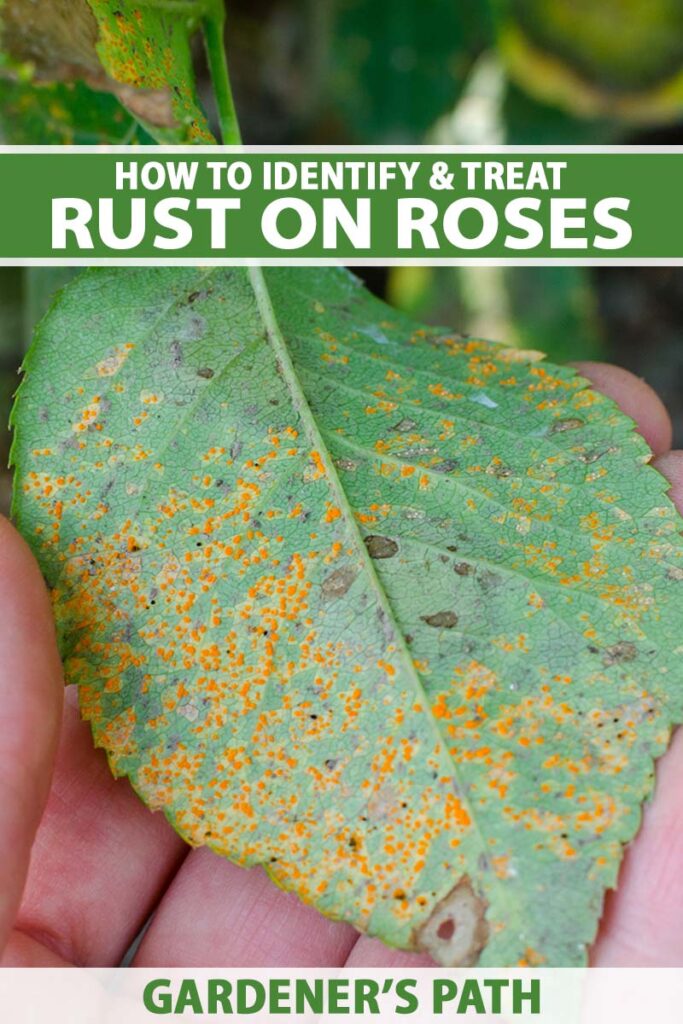

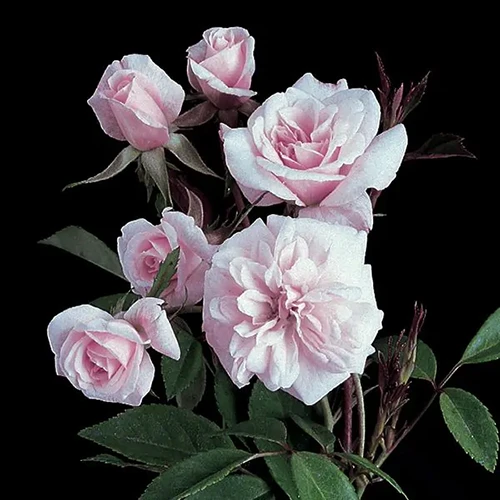
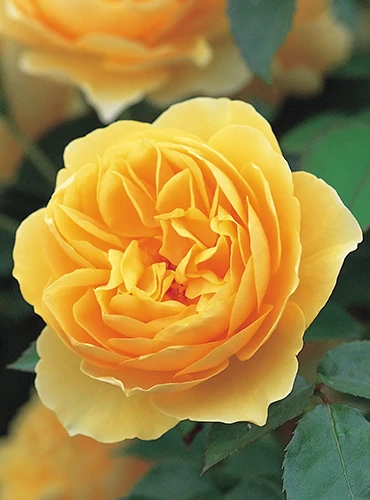
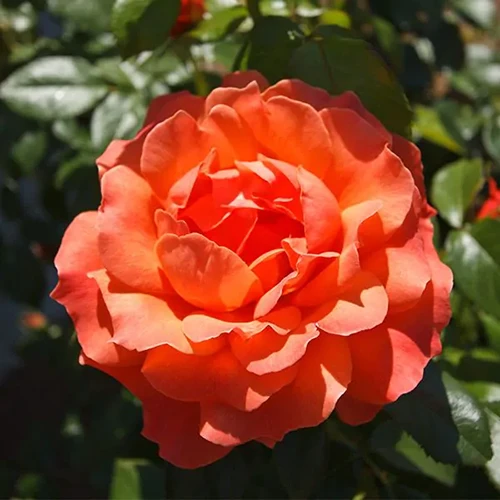
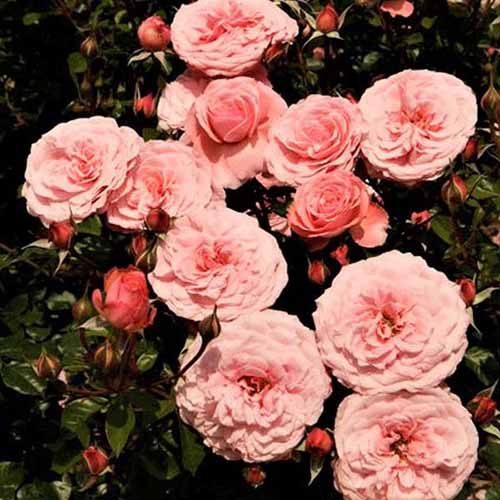
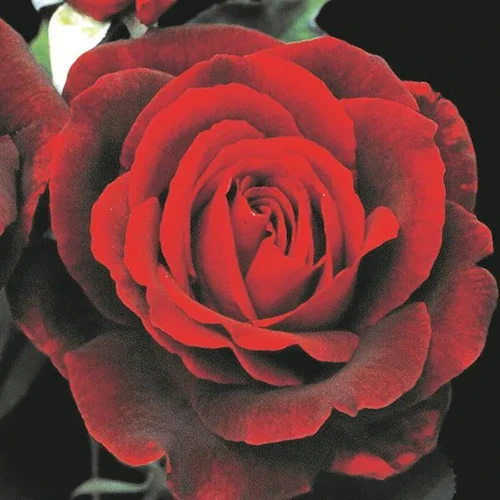

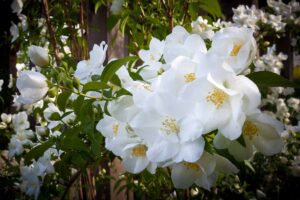
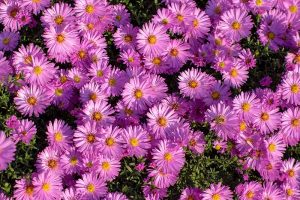
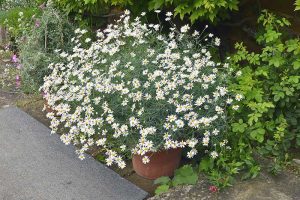
Very very very very very, helpful. Thank you for the ‘complete’ lesson which I will now adhere to as if, and it is, the law of caring for one’s roses.
Hi Gail, glad we could help!
What if I can’t burn or bury the infected branches?
Hi Beverly, it’s fine to bag them up, close the bag, and dispose of the bag in the trash. Don’t put it in the yard waste bin (if you have one).
My Mr Lincoln and Peace both have rust. 🤦🏻♀️ Still, there’s no way I’m pulling those gorgeous boys out, so I’ll have to get out the fungicide and baby them for the next few weeks until it dries out.
Hi Sarah, those are both pretty tough roses (not to mention gorgeous), so I wouldn’t “shovel prune” them, either! You can get rid of rust with some diligence. Good luck with it!
Would like to join this group!
Thank you for being a part of a our community of readers! Feel free to follow us on social media.
What pesticide is effective on rust????
Pesticides are generally used to destroy insects, whereas a fungicide is what you’re after in the case of rust. Have you tried the suggestions provided above in our article? We recommend it!
I think I have lost my knock out roses. They were gorgeous in spring, so full. Am not an intense gardener… we had drought and then lots of rain. This seemed to happen over the past two months. So now I am applying fungicide…but maybe I should pull these out?
Hi Carol, this doesn’t look like rust, it actually looks like downy mildew. I won’t lie, it’s not an easy disease to address, but don’t lose heart. There are ways to handle it. We have a guide to walk you through how to do it. I never want to suggest giving up on a rose, but we all have to do it now and then. Maybe try treating it this year and see how it looks next year. Best of luck to you.
Thank you. I have trimmed most of the bush. It is about 10-12 years old, so a lot of dead wood at the bottom. Will check out the guide.
I’m in the same boat as you. I had to trim a favorite rose nearly down to nothing after a botrytis blight situation. It’s finally sending out healthy new growth. I’ll keep my fingers crossed for your plant!
Horrendous problem on my climbing rose
Hi Karen, this looks like a nasty case of black spot. You can learn more about this disease in our guide. It’s hard to tell from the images, but it looks a bit like there are some raised spores on the undersides of the leaves. Is that the case? If so, could you take a close-up photo of this growth? It might indicate a second disease.
What’s happing with the buds on my white miniature rose?
Hi there, it’s a little hard to tell from the photos, but it looks like the flowers are balling or a fungal disease. Balling happens when the bud is forming and then it gets wet, either from rain or irrigation. In order to determine if the problem is fungal in nature, I’d need a closer, in focus image of the flower and any leaves that appear to be diseased.
I live in Alaska. I have never seen this before.
Just planted two roses in April 2024. One rose “Peace” is developing rust. I live in Southern California and have had no rain since March and no high humidity. I sprayed Neem oil on the plant. Is there anything else I should do? Also sprayed Neem on the other rose bush. Hoping it doesn’t get rust.
Hi Diane, it’s not unusual for rust to develop even without rain or high humidity. It sounds like you are on the right track. Prune off any heavily symptomatic leaves and keep spraying with neem. If neem doesn’t work, copper, mancozeb, or Bacillus subtilis tend to be more effective.